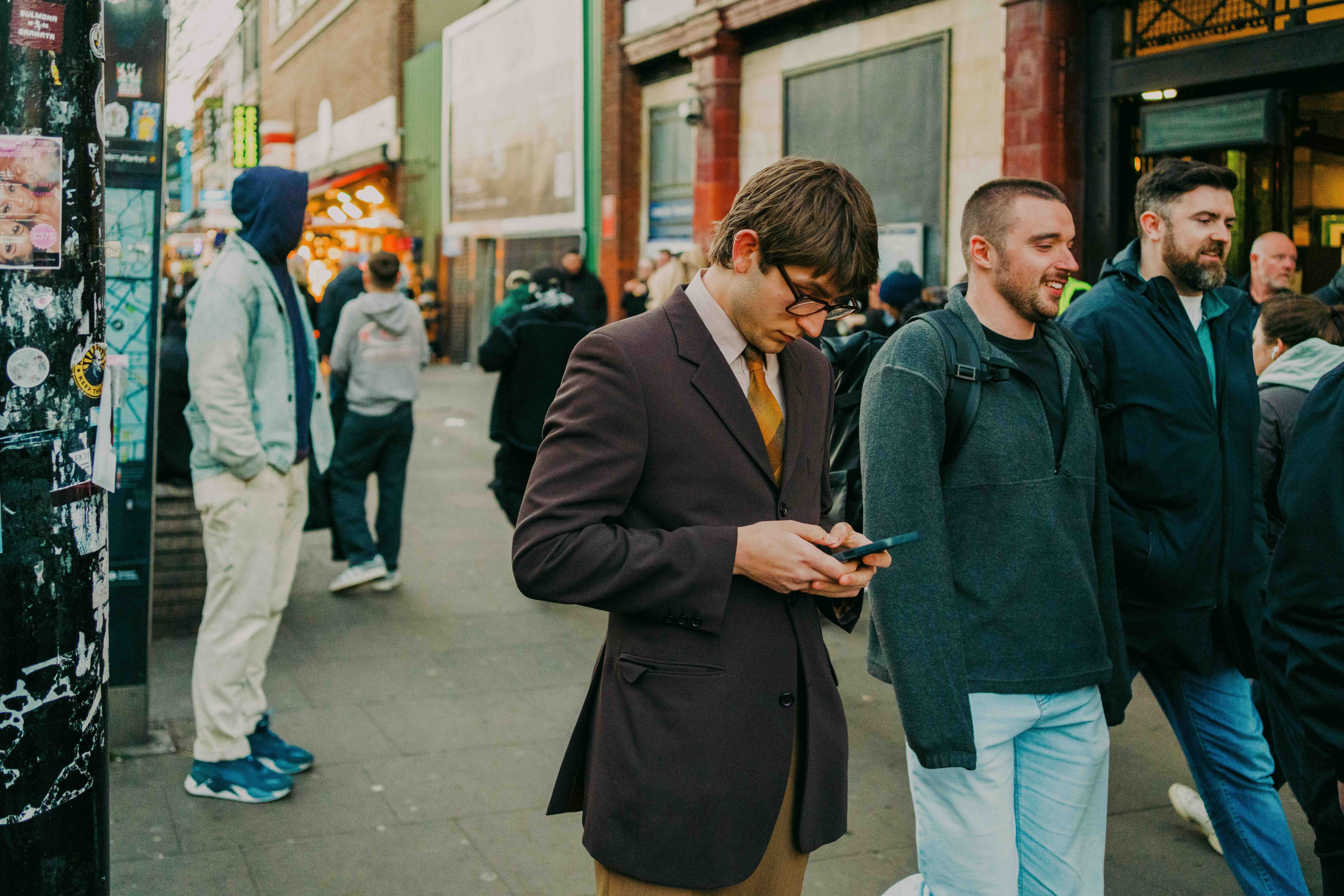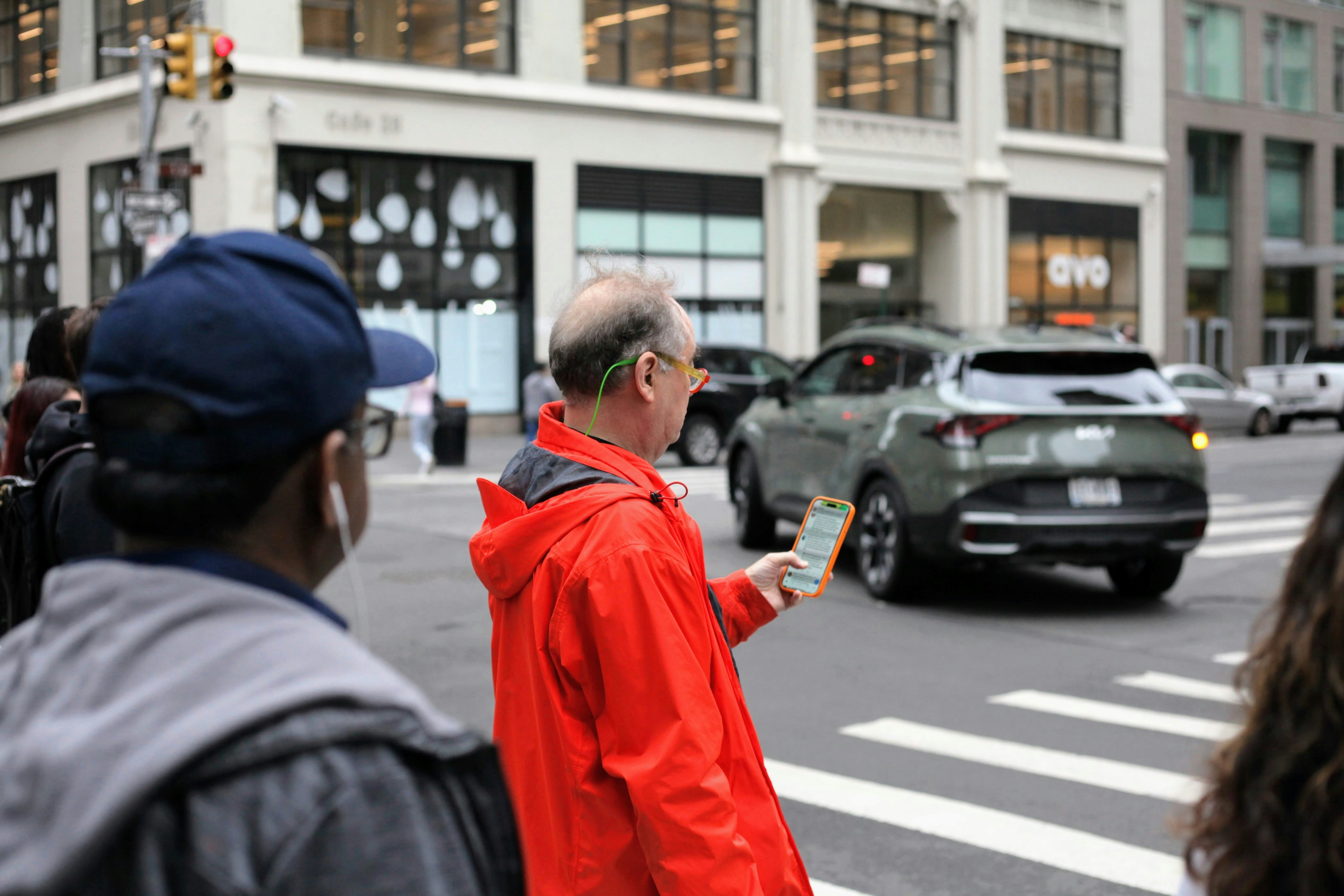
Everywhere I look, heads are down. Street zombies bumping into each other on pavements, all staring at their phones. Drivers trapping away on keypads while steering with their knees. Couples sitting together in silence, faces lit by blue light instead of candlelight. Even cyclists weaving through Amsterdam traffic have one hand on the bars, the other gripped around their phone – parents steering bakfiets full of kids through winding streets scrolling through feeds; oblivious while essentially driving a tank.
It’s ironic that they’re scrolling despite actually doing something that demands attention. It shows how far things have gone. How people feel unable to disengage from their online worlds.
For brands, that presents both a problem and an opportunity. How do you reach people who are always distracted – distracted even while experiencing real life? The answer isn’t more ads, brighter graphics, slicker content, or smarter algorithms. For brands who want to stand out, it’s all about participation. The brands that will make an impact are the ones that give people a reason to lift their heads up, to notice, touch, play, and connect in the real world again.
Why content isn’t king
A few years ago, I’d watch this distraction with anger. How could people be so careless, so disconnected from what’s right in front of them? But now I mostly feel sorry for them. For us. We’ve traded awareness for alerts, curiosity for convenience. The constant buzz of connection has numbed our ability to truly notice – each other, our surroundings, and even ourselves.
They can not only make an impact on their bottom line, but also on society and mental health. We know the costs of excessive phone use: studies link it to increased anxiety, depression, insecurity, and loneliness, particularly among young people. Research shows that nearly half of UK adults believe their attention span has shortened, and neuroscientists have documented how the dopamine loops of social media mimic addictive behaviors.
People are absolutely gagging for in-real-life connections. So, when a brand creates an experience that requires you to put your phone down, to engage with your hands, your community, or your curiosity, it's doing more than marketing, it's modeling a different way of being. It's saying: your attention is valuable, and you deserve something worth giving it to.


Experience as antidote
Think about LEGO. It doesn’t just sell bricks, it invites people to build – to do, to experience the joy of creation. It’s why its tagline for experiences is: bricks in hand. You can’t scroll with a LEGO brick in your hand! Sure, you can take a snap to remember the moment and share the fun, but then you put your phone away and engage. It’s tactile, participatory, and immediate. That’s what brand experience is at its best: a moment that snaps people out of autopilot and back into the present.
Guinness’s ‘Made of More’ campaign celebrates real-world gatherings and pubs as third spaces where people actually connect. It’s also created immersive brand experiences like the Guinness Storehouse in Dublin, where you learn to pour your own pint – a tactile, social ritual that is, again, impossible to do with a phone in your mitt.
Netflix House (tagline “Netflix just got real”) is a great example of passive content being changed into active – that brands whose entire model is built upon observation, not participation (or which are digital only) can also expand into real-life connection.
When brands create these physical, playful, curious or emotional moments, they’re offering something rare: attention worth giving. Don’t get me wrong, this isn’t a rejecting technology rant, it’s about using it with purpose. There’s still a time and place to take photos and join conversations online. But the starting point has to be the real thing – the story you lived that’s worth telling.
For brands, that means putting the product, the message, or the moment in hand. To make the kind of experiences that spread through old-fashioned word of mouth, not just likes and shares. Because when you make people feel something real, they’ll remember it far longer than they will a post scrolled past while also riding a bike.



